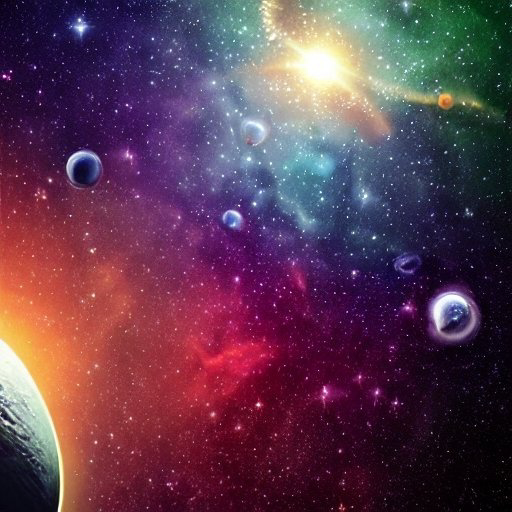What is that? A squirrel? Chipmunk?
𝕽𝖚𝖆𝖎𝖉𝖍𝖗𝖎𝖌𝖍
🅸 🅰🅼 🆃🅷🅴 🅻🅰🆆.
𝕽𝖚𝖆𝖎𝖉𝖍𝖗𝖎𝖌𝖍 𝖋𝖊𝖆𝖙𝖍𝖊𝖗𝖘𝖙𝖔𝖓𝖊𝖍𝖆𝖚𝖌𝖍
- 15 Posts
- 2.53K Comments

 2·1 day ago
2·1 day agoRust needs to be reduced back to ore, using a reactive, usually coke. Coke is purified coal. Coal is a fossil fuel. You can do it with charcoal, which can be made by burning wood, so it’s possible without coal, just not as efficient. This assumes you can gather the rust - it tends to break down and disperse into the environment, but if you broke up concrete to get at rusted rebar and could collect the rust, you could reduce it with charcoal.
Again, it’s a matter of scale. We mine iron and deposits because we can get large amounts in seams. If you’re trying to harvest rust and reduced it with charcoal, you’re producing iron on the scale of making knives and swords, not cars, or combine harvesters, or more rebar.
It’s a chicken-egg problem. We have been able to come as far as a have because oil, coal, and iron were just laying around on the surface, in huge quantities. Those are gone, and now you need the big tools first to get at the reserves that are left.

 1·1 day ago
1·1 day agoAny worked iron product rusts. If we’re talking about evolutionary time scales, any exposed metal - which is most of it - is going to be unusable within thousands of years, and even rebar embedded in concrete will be gone in millions. Heck, our concrete isn’t even as good as the Romans’, and even that’s going to break down in thousands of years.
We’ve stripped the raw, surface, easily accessible stuff and worked it into things that will degrade. There may be some scavenge, but nothing that can be gathered in any quantity to build an industrial society on. At best, future societies will be like medieval Japan, where iron is rare and steel precious and hoarded, only unlike Japan, there won’t be a future where they can import huge quantities of the stuff from China or Australia, because getting to the deposits now requires an industry and advanced mining equipment… which is all made out of iron they won’t have.
Gold will be interesting. Again, it’s not just laying around everywhere just under the surface. Instead, there will be isolated pockets of huge piles of the stuff. Gold doesn’t degrade, but it’s all hoarded. There’s a bunch in electronics, but in tiny, tiny amounts in each device; trying to salvage that is really hard, and yields trace amounts. No more nuggets the size of your thumb, or your fist. If a future civilization could build a global economy, then gold wouldn’t be an issue. Uranium will be hard, as will platinum, and platinum is a useful, but consumable, catalyst, and rare even today it’ll be almost unheard of in a perpetually pre-industrial post-apocalypse.
Fossil fuels are going to be the big issue, though. What’s left will simply be inaccessible, and without fossil fuels you don’t have plastics, industry, fertilizers at scale, global transportation, or the ability to work whatever metal you can find, at any scale.

 0·1 day ago
0·1 day agoIt’s pretty nice, although IME it’s really crashy.

 3·2 days ago
3·2 days agoThank you. I don’t know that I ever knew that statistic about Greenland’s population. The nuke statistic tossed around - that I always heard - was something like “there are enough nukes to blow up the world a million times,” with is a silly, sloppy metric that doesn’t day anything about the actual warhead count. Are those Tsar Bombas, or Fat Man? How many megatons are required to “blow up the world” once? But that graph is interesting; it’s even more interesting that there population of Greenland and the number of (viable) warheads on the planet have been so relatively close.

 5·2 days ago
5·2 days agoI mean, if that’s how you get your rocks off, you do you. Personally, I’ve never found vitriol to be in any way healthy.

 261·2 days ago
261·2 days agoThe biggest challenge for future intelligent species, and the reason why I know we’re the first technological ones, is that we’ve mined all of the easily accessible metals and all of the easily accessible fossil fuels. Any intelligence arriving after us is going to have to make a civilization without iron, precious metals, oil, or coal. Unless you get into some sci-fi bio-engineering scenario where they’re growing high tech, they’re doomed to being stuck in the stone age. It’s going to be hard for them to escape the planet, defend it from asteroids, deal with super-volcanoes, build advanced calculating devices… all of the stuff we would already find challenging even with all the resources we have.
Millions of years are not enough to replenish the fossil fuels, and the sun is going to start expanding before enough life lives and dies to produce any useful amount of biomass. Before then, more metals will become accessible, in places, but good luck working it at industrial levels without fossil fuels.
I’m not saying it’s impossible, but we’ve given a severe handicap to advancing beyond a rudimentary agrarian society for any successor species; even if it’s our own descendants re-arrising from a post-apocalyptic environmental catastrophe.

 13·2 days ago
13·2 days ago“You’re not obligated to respond”, combined with “nobody else cares about your quarrel but you and that idiot” are the two maxims that make my social media experience better. Sometimes I feel like arguing, but if I think someone’s arguing in bad faith, I just block 'em.
Life’s too short to spend time interacting with morons.

 5·2 days ago
5·2 days agoBut why would you have thought that? There have always (for recorded history values of “always”) been people in Greenland; there have only relatively recently been nuclear warheads. So - regardless of truth - why would you have assumed that there must have at some point been more warheads in the world than people in Greenland? That doesn’t seem like an obvious assumption, to me. What made that occur to you?

 14·2 days ago
14·2 days agoJust to clarify for OP:
The format is always SVG, as it’s an open standard. Inkscape is the leading FOSS SVG vector editor. Boxy is a web-based SVG editor which is freemium.
SVG is the W3C standard for vector graphics that can be rendered by practically every browser. Gzip compressed SVG files (svgz) are much smaller but enjoy less support.
Illustrator can import, edit, and export SVG files.

 103·2 days ago
103·2 days agoA little later, maybe, but much the same… on the upside:
- we were optimistic.
- we were going to conquer space, and it was going to be real live humans, not semi-autonomous robots
- society (in the US and W. Europe) was (very) slowly getting more progressive.
- Hitler had been killed, and fascism defeated forever. Never again would we have another dictator; never again would we watch a country commit genocide against a people.
- life was slower. TV was the bad influence rotting kids brains. We didn’t have an entire industry focused on commoditizing us.
- computers were fucking incredible. The future we imagined coming from computers was very, very different than what we ended up with. For one thing, we didn’t imagine a single-minded focus of all software and computing power on commercializing every aspect of our life.
- no Facebook, no Twitter, no TikTok
- Income disparity was far less extreme, and class mobility was a realistic dream. You could imagine buying a nice house and raising a family on a single income. If you worked hard and had a little luck you could pass on some reasonable wealth to your kids.
- shit really was - in the aggregate - getting better all around. Technology was advancing and bringing amazing products; science was being discovered that you could basically wrap your head around. Lives (in the Western world) were improving (relatively, compared to previous decades) for most people, and all this happened at a pace that didn’t up-end your world every day, 365 days a year.
- you could get all the news you needed for a fairly rounded world view in a single newspaper, much of which you could read over breakfast. There was no information overload.
On the downsides,
- dad beat us with a belt as punishment
- we were having wars that were disrupting society. The draft was a real worry.
- we were constantly afraid that nuclear war could happen at any time
- commies were hiding under our beds
- minorities of all kinds were fighting for their rights, and fighting to get them enforced. It sucked to be gay, or black, or a woman (but it was getting better, slowly)
- most people didn’t have access to a computer, much less a PC until well into the 80’s, so you had to infiltrate University computer labs.
It was a slower world, with fewer consumer goods, fewer conveniences, and worse medical care. Everybody smoked, all the time. But slower was good, and - best of all - we didn’t realize yet that we were killing the planet; the world wasn’t ending.
 4·3 days ago
4·3 days agoThat’s a 10 hour toilet visit, right there. No mute.
When it was first released, I was interested in the decentralized nature of it as a currency. I liked - well, I still like - the idea of a currency that isn’t controlled by a government. At the time (2009-ish?), I also thought it was anonymous, which also appealed to me; cash is mostly anonymous, but it can’t be used online, and even then the fact that society was increasingly moving toward cashless - and very traceable, and usary-heavy - credit cards was clear. Stripping privacy is critical to control.
Bitcoin isn’t anonymous, but other cryptocurrencies are, and bitcoin laid the groundwork. To your question, I, and many other people, paid some money to get some bitcoin - I think I spent $120? Mainly so I had enough to explore the space and play with it, because even then mining seemed painfully slow. Once money was spent on it, by whomever and for whatever reason, it acquired value: the value that, if you had some, you could sell it to someone else, or trade it for goods. In that way, it has the same value as an IOU on which I’ve scribbled “Good for $10 from Ruairidh Featherstonehaugh” and signed my name. Flawed metaphor, but you get there idea - the paper itself has no intrinsic value.
Despite that mining is so horrible for the environment, the concept that motivated Bitcoin still IMHO has value. An entirely digital, cashless system, not controlled by any one organization but rather by the community of participants. If Bitcoin didn’t have the environmental cost - if it has been proof-of-stake rather than proof-of-work, or if the computational work was actually something useful to society like gridcoin.us, it wouldn’t be so controversial. Sure, people are still going to be bitter about not buying into it early, but as long as people are willing to trade goods and services for it, it’ll have real value based on market rates.
He shoots, he scores!
“Colloquialism, motherfucker! Do you speak it‽”
Edit: corrected autocorrect incorrection

 101·3 days ago
101·3 days agoThere’s hope, though. Although stalled by the current civil liberties regression phase we’re going through in the States, and the rise of fascism globally, in some States and some countries assisted suicide is legal. There’s a wonderful product called the Sarco Pod, developed by an Australian, that performs euthanasia by nitrogen, which is one of the best methods of suicide. It’s not currently widely available, but hopefully services offering it will start popping up. We have to get through this rough patch, first.

 1·4 days ago
1·4 days agoNone necessary, but thanks.

 1·4 days ago
1·4 days agoLamenting that a phone or tablet can’t use zwave for networking is really strange.
It would be, if anyone were doing that.








I use snapcast throughout my house and devices, but there’s no snap_server_ for Android.
I’ve been meaning to try roc, for which there is an Android client that will both play and serve.
Sonobus also claims to be many:many; I haven’t tried it either and it doesn’t look particularly active.
I don’t use UPnP or DLNA because of the security issues, so I can’t offer a suggestion about that. I thought DLNA was a pull oriented protocol - like, to send music from your phone you’d have to select and play on your computer with a DLNA client. Can you push media with DLNA?